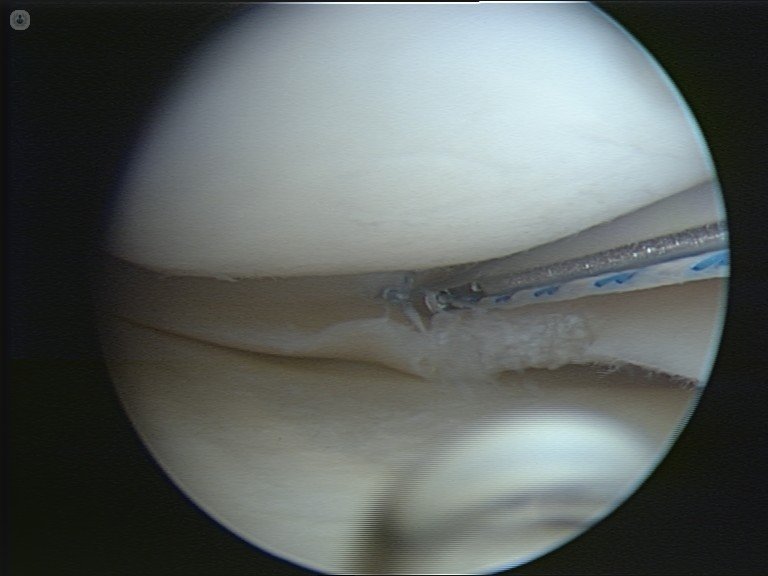What is suture meniscal tear?
Written by:
What is the meniscus?
 The meniscus is a crescent-shaped structure that consists of fibrocartilage and located on the knee between the femur and tibia. Explain specialist Traumatology that people have two menisci in each knee, one external and one internal.
The meniscus is a crescent-shaped structure that consists of fibrocartilage and located on the knee between the femur and tibia. Explain specialist Traumatology that people have two menisci in each knee, one external and one internal.
The medial meniscus is shaped like a "C" and the outside, which is closed, it is almost shaped "O". Both are composed mostly of type 1 collagen fibers arranged parallel to the major axis, a fact that gives it great capacity to withstand tensile forces. The menisci are fixed to the tibia by the above roots and subsequent. Moreover, they are also attached to the joint capsule on its periphery.
The menisci have low cell density, and only receives input from blood vessels in the peripheral 1/3. For this reason, its healing capacity is limited.
Functions meniscus
The main biomechanical function of the meniscus is to contribute to the transmission of loads in the knee joint between the femur and tibia. The two compartments of the tibial-femoral, internal and external, are not entirely consistent articulation. The tibial plateau is flat and slightly convex outer compartment. Meanwhile, the surface of the femoral condyles is convex.
This anatomical arrangement makes the meniscus necessary to make the joint more consistent, increasing the contact area and, thus, the weight is transmitted through the joint is distributed over a larger surface. This protects articular cartilage.
Another function of the meniscus is to confer stability to the joint. Thus, patients in which an ACL reconstruction is performed and that will repair the meniscus has better stability to which the meniscus has removed them.
What is suturing the torn meniscus?
The suture a meniscal tear is to repair damaged tissue, rather than removing it, which is what is traditionally done. In this way we maintain the function of burden sharing with the meniscus, and we prevent future osteoarthritis. Conversely, removal of the meniscus causes the load distribution in the joint is not uniform, decreasing the contact area losing joint congruence. This causes the loads to be transmitted in a very small area in the area of contact between the femur and tibia.
For its part, the articular cartilage works very well as sliding surface with very low coefficient of friction, but is not designed to withstand such heavy loads to which it is submitted if missing the meniscus, as it begins to degenerate and osteoarthritis occurs. This happens safely and quickly. The situation is even more delicate when it comes to the lateral meniscus, the function of which is more important than domestic. We must save the meniscus!


